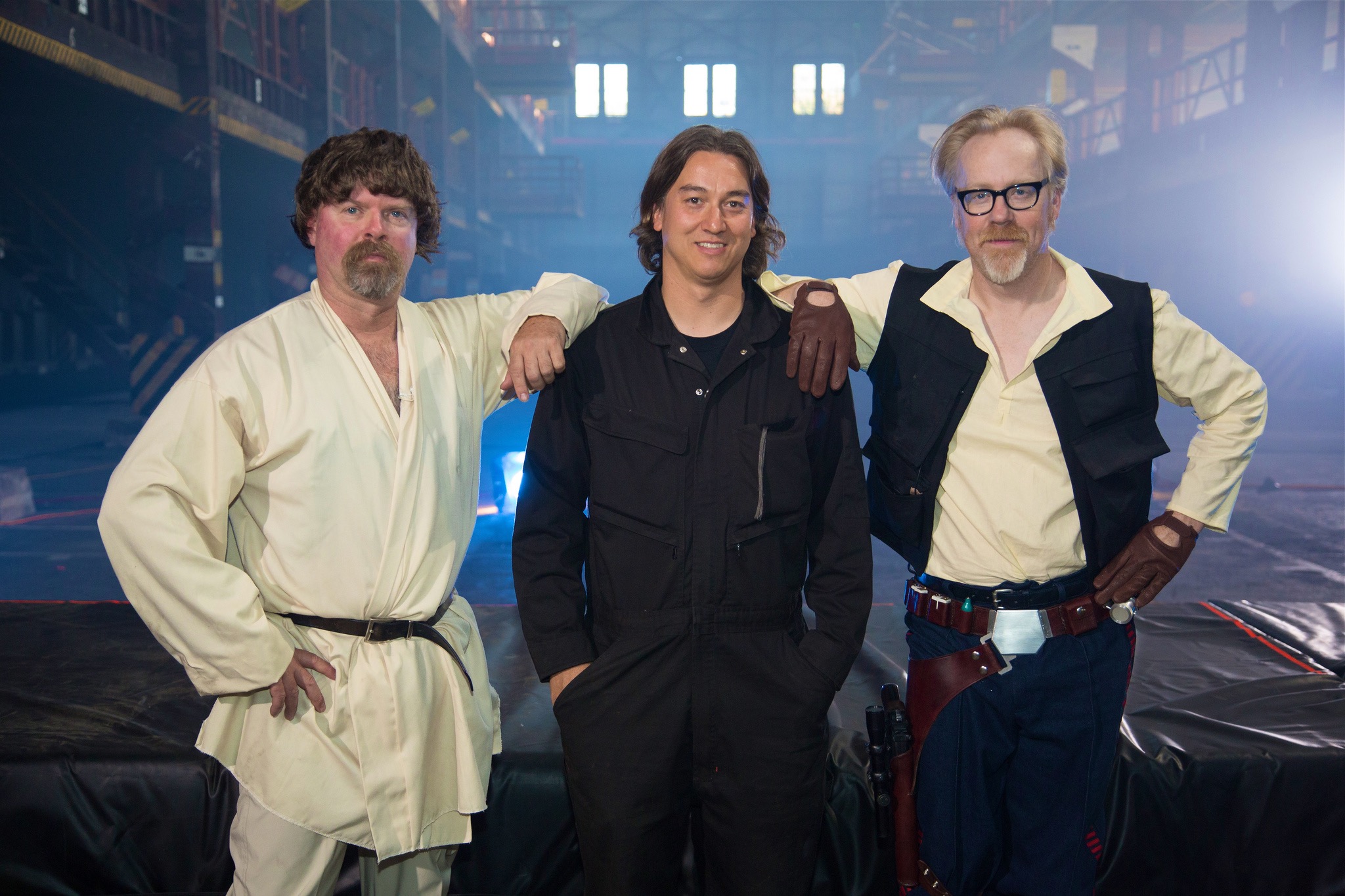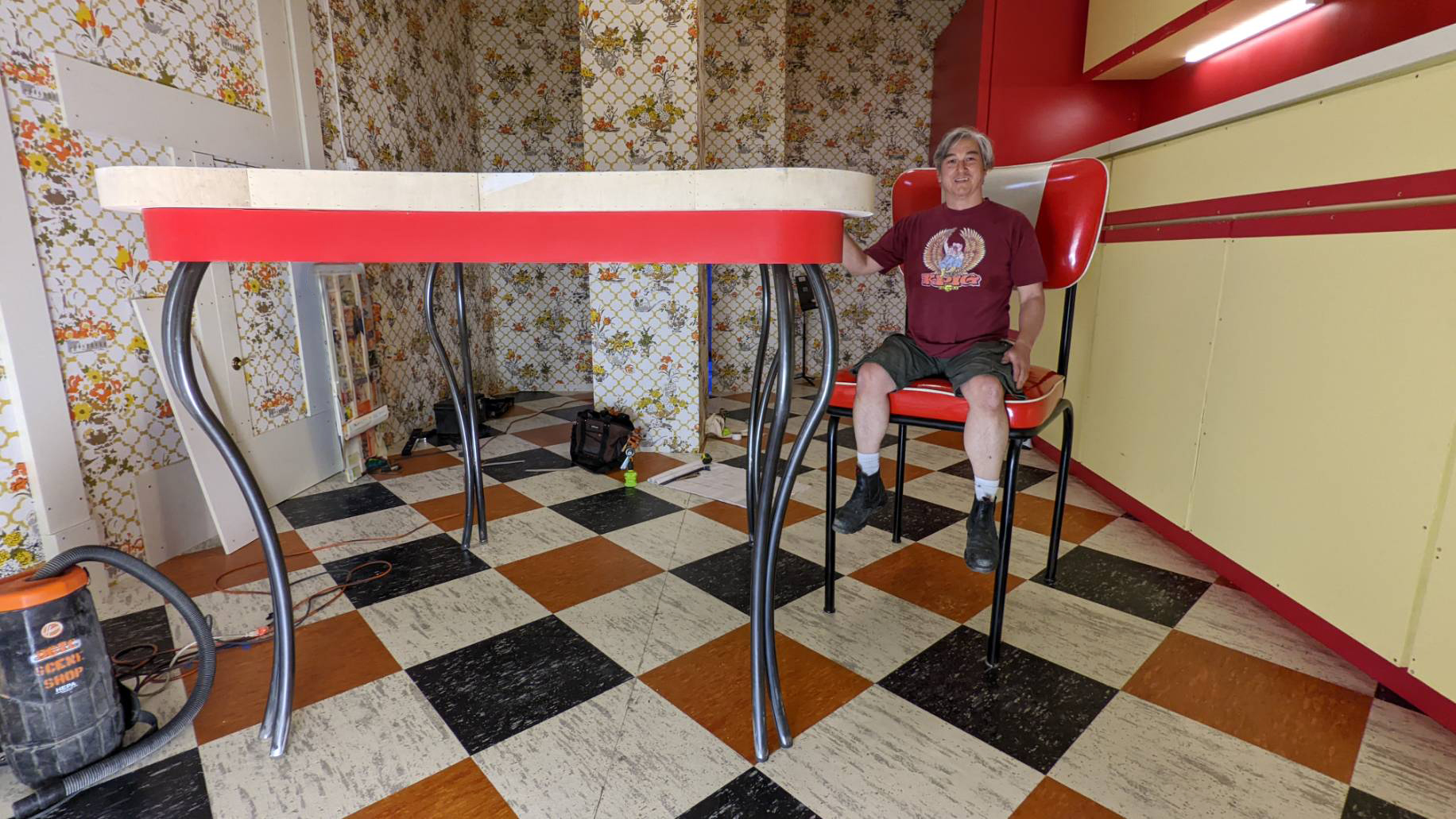Get to Know Tory Fink
From the set of MythBusters to being a welding instructor, to the campus of CU Denver, Tory Fink has a diverse professional background.
Megan Briggs Pintel | College of Arts & Media May 9, 2024
Originally from the San Francisco Bay Area, Tory Fink’s professional career as a builder and art director has taken him on some diverse paths (and film and television sets). Fink worked on the MythBusters franchise for several years, utilizing his fabrication expertise on the shows MythBusters, White Rabbit Project, MythBusters: The Search, and MythBusters Jr. Fink was also a member of the visual effects crew for Rogue One, a film in the Star Wars franchise and which was nominated for an Academy Award for Visual Effects. In 2020, Fink was highlighted in Cinefex Magazine’s 40th anniversary issue for his work on “Star Wars: The Rise of Skywalker” as part of the special effects team. Other non-film and television related career highlights include being a mentor to students and adults as an instructor of welded sculpture and snowboarding. Now, Fink serves in the College of Arts & Media as its Film & Television production design coordinator and lead. When he is not working, Fink snowboards, makes metal sculptures, and is a member of the Arvada Gardeners. He recently made 11 red steel memorial poppy flowers for Olde Town Arvada’s WWI memorial.

- How did you get involved in art direction/set design/fabrication?
I have loved and wanted to be involved in film making since I was young. I first got involved with fabrication at a non-profit industrial arts school in Oakland called The Crucible. I was studying Spanish history and wanted to make a suit of armor. I saw a billboard ad that said the school taught blacksmithing. The wide range of art forms taught there, combined with a diverse community fed my natural interests. I began volunteering and immersed myself in the large artist community there. The school was a hub for Burning Man projects, so there were a lot of opportunities to work on unique, large-scale sculptures. One project that I got to be a lead builder on was the Raygun Gothic Rocketship, which now lives in front of the Wings Over the Rockies Museum in Denver. The school also did several theater performances a year as fundraisers, which allowed me to perform and work on stage sets and props. Eventually I became a studio manager and welding instructor.
One day, there was a job flyer posted on the community cork board for a shop assistant at MythBusters. Being a fan of the show, I had to apply, even though I never thought I would get the job. Cut to the morning of my first day and I am on the set (which was the M5 shop floor) and it's the director, the camera person, sound person, the host and me. It was a surreal moment. It worked out: I eventually became the Shop General / Lead Builder, and I was there another five years until the original show ended. I continued with the same crew after that to create three more series of the MB franchise. I added Art Director to my title on MythBusters: The Search.

Tory (center) with Mythbusters hosts Jamie Hyneman (left) and Adam Savage (right). 2. Would you consider yourself to be artistically inclined? What kind of art do you gravitate toward?
I have always loved making and supporting art and artists in any form. I like all visual arts. The visual arts encompass personal creative expression and practical honed skills, two things I gravitate toward. I always loved to draw, and I made a few hand-drawn animated shorts in high school. I took television production and film making classes as soon as I could. I make a point to visit a museum or art gallery in any new city I visit. I also really appreciate art that is attractive and functional, like Art Nouveau and Art Deco architecture.
3. Can you tell us about a challenge you faced on the set of MythBusters and how you figured it out?
Television production is challenging enough as is. Add weekly interactions with TNT, high pressure gases and weapons of various kinds and from different ages, and the challenges take on a whole other dimension. But that is what made it such an amazing experience. No two days were the same. The challenge was truly not knowing if what we were doing was going to work or not. The scientific method was our process. As a result, none of us knew what the outcome would be. The process was educational for all of us involved.

4. When you think about the jobs you’ve had and the sets you’ve worked on, how much of your success would you say is a result of luck (being in the right place at the right time, for instance) and how much is the result of working hard at a craft?Looking back, all the things I was interested in and pursued led to opportunities. When I become interested in something I want to learn everything there is to know about that subject and dedicate hours and years learning more about them. My love of snowboarding led me to becoming an EMT and working on Board Patrol. Working as a substitute teacher in the public school system prepared me for working at an art school with at-risk youth in an after-school welding program. Assisting in those classes is where I first learned welding and metal work, eventually becoming a certified welder. I volunteered for years, learning every method of building I could at that art school. Having a background in building, metal fabrication and being an EMT was a perfect background for MythBusters, a workplace that utilized a lot of building, metalwork and involved potentially dangerous experiments. Working at learning and educating yourself on subjects and skills that interest you can open up opportunities that you never thought you could have. Follow what you are passionate about and that you are instinctively drawn to. This path cannot always be predicted or planned for, but things just seem to fall into place. Is that luck? Maybe, but if I had not put in the years of hard work I would not have been prepared for those opportunities. In that sense, I believe we make our own "luck".

Tory on the set of DCPA’s “Theater of the Mind”. 5. What makes a good art director?
A good art director is observant and pays attention to detail. Having a wide range of knowledge of visual art, architecture and pop culture is very useful. I use the example of James Cameron as the power of a good art director. Cameron began his film career as a young man working on science fiction B movie sets. He learned to use inexpensive everyday items to decorate a set to look like a spaceship. He then worked as a production designer and eventually wrote and directed his own films. Working as an art director trains your eye to see everything that is in the film frame. A great photography teacher I had emphasized this same concept. He said that everything in the composition of the image you are making should be there because you want it to be. Being aware of every detail that is on a set or in a shot contributes to building the world of the story you are telling. Cameron's attention to detail as a production designer built the foundation for building worlds in Terminator, Aliens, Titanic and Avatar.